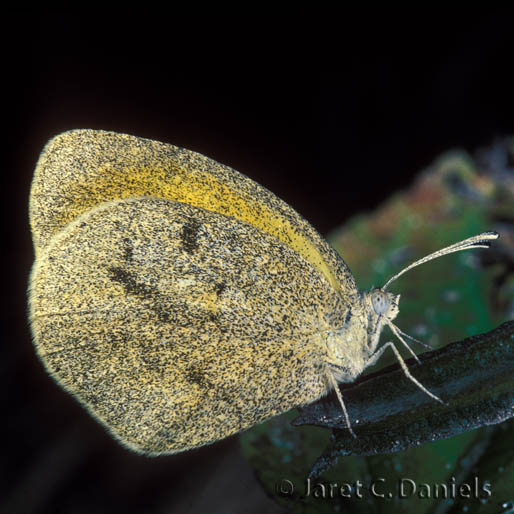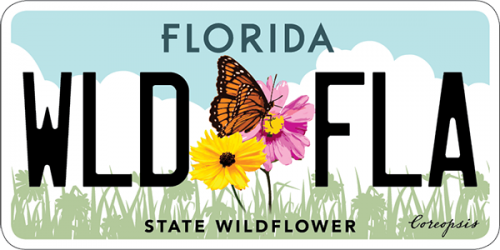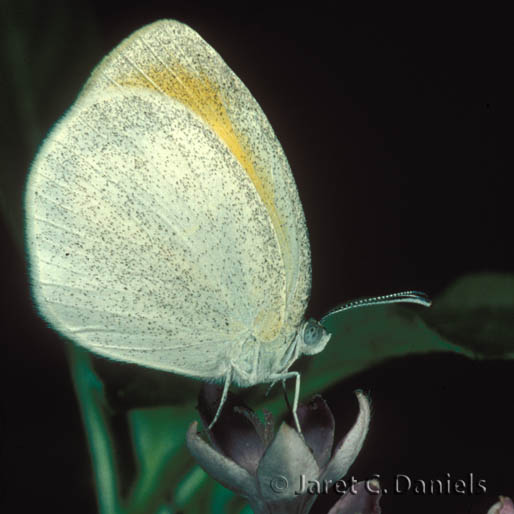- Family name: Pieridae/Whites and Sulphurs
- General description: Seasonally variable; summer form (wet season) individuals pale yellow to white with black hindwing margin. Male forewing with black apex and distinct wide black bar (often edged in orange) along training margin. Female forewing with black apex and diffuse (or nearly absent) black bar along trailing margin. Ventral hindwing light gray to immaculate white. Winter form (dry season) individuals bright yellow with black patch along hindwing margin. Male forewing as in summer form. Female forewing lacking black bar long trailing margin. Ventral hindwing brown to reddish with numerous darker pattern elements. Various intermediate forms can be found.
- Field Marks: Forewing with black apex and wide black bar along training margin
- Sexes: Appear different
- Wingspan: 25-38 mm

- Life Cycle: Egg: whitish-yellow, spindle-shaped, laid singly on host leaves Mature larva: green with narrow lateral white stripe Chrysalis: variable; green, mottled green and black, or black
- Number of Generations: 3 or more per year
- Flight Season: All year
- Abundance: Common
- Habitat: scrub, open pine woodlands, disturbed sites, fields, roadsides, moist ditches
- Larval Host Plants: Joint vetch (Aeschynomene americana), pencilflower (Stylosanthes biflora), perennial peanut (Arachis glabrata)
- Similar Species: No similar species
- Additional Information: Adults overwinter in reproductive diapause.
- Range in Florida
 The Florida Wildflowers & Butterflies projects at the Florida Museum are sponsored in part by the State of Florida and the Florida Wildflower Foundation, Inc.
The Florida Wildflowers & Butterflies projects at the Florida Museum are sponsored in part by the State of Florida and the Florida Wildflower Foundation, Inc.
